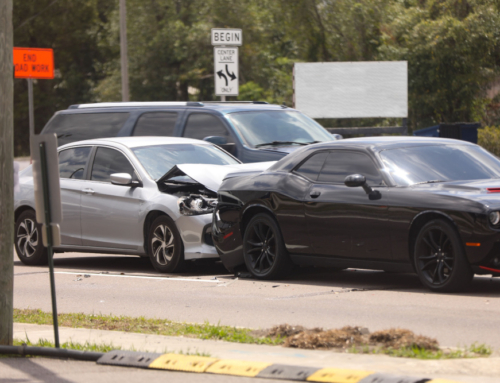In personal injury law, negligence is a key factor that determines whether an injured party can seek compensation for damages. Negligence occurs when someone fails to exercise a reasonable standard of care, resulting in harm to another individual. Understanding the different forms of negligence is critical to successfully navigating a personal injury claim. This article explores the various types of negligence recognized in personal injury law, how they apply to different cases, and the importance of proving negligence to secure compensation.
What is Negligence in Personal Injury Law?
Defining Negligence
At its core, negligence refers to the failure to exercise the level of care that a reasonably prudent person would under similar circumstances. In personal injury claims, proving negligence is essential to holding the responsible party liable for the harm caused. To establish negligence, the injured party must prove four key elements: duty of care, breach of that duty, causation, and damages.
- Duty of Care: The defendant must have owed a legal duty of care to the plaintiff. For example, drivers owe a duty of care to other road users by following traffic laws and driving safely.
- Breach of Duty: The defendant must have breached that duty by acting negligently or failing to act responsibly.
- Causation: The breach must have directly caused the injury or harm suffered by the plaintiff.
- Damages: The plaintiff must have suffered actual damages, such as medical expenses, lost wages, or emotional distress, as a result of the defendant’s actions.
These four elements form the foundation of any negligence claim and are crucial for determining liability in personal injury cases.
Types of Negligence
Negligence can take different forms, depending on the specific circumstances of the case. Some of the most common forms include ordinary negligence, gross negligence, and comparative negligence. Each type varies in its severity and the degree of responsibility assigned to the defendant, which can affect the outcome of a personal injury claim.
Ordinary Negligence: Everyday Carelessness
What is Ordinary Negligence?
Ordinary negligence, also known as simple negligence, occurs when a person fails to take reasonable care in a situation where they have a duty to act responsibly. This is the most common form of negligence in personal injury cases. It typically involves acts of carelessness or inattention that lead to injury but without any intent to cause harm.
For example, a driver who is distracted by their phone and runs a red light, causing a car accident, may be found liable for ordinary negligence. Although the driver did not intentionally cause the accident, their failure to act with reasonable care led to the injury of another party.
Proving Ordinary Negligence
To prove ordinary negligence, the plaintiff must show that the defendant’s actions were inconsistent with what a reasonably prudent person would have done in the same situation. For example, if a store owner fails to clean up a spill in an aisle and a customer slips and falls, the plaintiff would need to demonstrate that the store owner had a duty to maintain a safe environment, breached that duty by not addressing the spill, and caused the injury as a result.
While ordinary negligence may seem straightforward, proving it in court often requires thorough documentation, witness testimony, and expert analysis. A skilled personal injury attorney can help gather the necessary evidence to build a compelling case.
Gross Negligence: Reckless Disregard for Safety
Defining Gross Negligence
Gross negligence goes beyond ordinary carelessness and involves a severe disregard for the safety and well-being of others. It refers to actions (or inaction) that show a reckless or willful disregard for the consequences, often putting others at significant risk. Gross negligence is much more egregious than ordinary negligence and may result in higher damages for the injured party.
An example of gross negligence would be a surgeon performing an operation under the influence of alcohol or a driver excessively speeding through a school zone despite clear warning signs. These actions show an extreme lack of care and concern for the safety of others.
Legal Implications of Gross Negligence
In cases involving gross negligence, the defendant may face harsher penalties, including punitive damages. Punitive damages are intended to punish the defendant for their reckless behavior and serve as a deterrent for others. Gross negligence cases often result in higher compensation for the plaintiff due to the severity of the defendant’s actions.
Proving gross negligence can be challenging, as it requires showing that the defendant’s conduct was not just careless but recklessly indifferent to the safety of others. This often involves expert testimony and a detailed investigation into the circumstances surrounding the incident.
Comparative Negligence: Shared Responsibility
What is Comparative Negligence?
Comparative negligence comes into play when both the plaintiff and the defendant share some degree of responsibility for the accident. In such cases, the court determines the percentage of fault for each party and adjusts the compensation accordingly. Comparative negligence laws vary by state, but generally, a plaintiff’s recovery is reduced by their percentage of fault.
For instance, if a pedestrian is struck by a car while jaywalking, the court may find that the pedestrian is 30% responsible for the accident and the driver is 70% responsible. In this scenario, the pedestrian’s compensation would be reduced by 30%, reflecting their share of the fault.
Pure vs. Modified Comparative Negligence
There are two main types of comparative negligence: pure and modified. In states that follow the pure comparative negligence rule, a plaintiff can recover damages even if they are 99% at fault, though their compensation will be reduced accordingly. For example, if the plaintiff is found to be 80% at fault in a $100,000 case, they would still receive $20,000.
In modified comparative negligence states, a plaintiff can only recover damages if they are found to be less than 50% or 51% at fault, depending on the state. If the plaintiff’s percentage of fault exceeds this threshold, they are barred from recovering any compensation. Modified comparative negligence encourages plaintiffs to exercise reasonable care to avoid contributing to their injuries.
Contributory Negligence: An All-or-Nothing Approach
What is Contributory Negligence?
Contributory negligence is an older and stricter legal doctrine that bars a plaintiff from recovering any compensation if they are found to be even slightly responsible for the accident. In states that follow contributory negligence laws, a plaintiff who is found to be 1% at fault for their injuries is prevented from recovering any damages.
For example, if a pedestrian is hit by a car while crossing the street but fails to look both ways, the court may find that the pedestrian’s failure to take precautions contributed to the accident. In a contributory negligence state, this minor oversight could prevent the pedestrian from receiving any compensation, even if the driver was mostly at fault.
Why Contributory Negligence is Controversial
Contributory negligence is considered by many to be an outdated and unfair doctrine, as it allows defendants to escape liability entirely, even when they are primarily at fault. As a result, only a few states still follow contributory negligence laws. For plaintiffs in these states, proving that they bear no responsibility for the accident is critical to recovering compensation.
Due to the harsh nature of contributory negligence, plaintiffs in these states face significant challenges in personal injury claims. It is essential to have an experienced attorney who can build a strong case and minimize the plaintiff’s role in the accident.
Vicarious Liability: When Others Are Held Responsible
What is Vicarious Liability?
Vicarious liability, also known as imputed negligence, occurs when one party is held legally responsible for the actions of another. This often applies in cases involving employer-employee relationships or situations where a person entrusts another with a task, such as lending a car to someone who causes an accident. In these cases, the person or entity that did not directly cause the accident may still be held liable for the damages.
For example, if a delivery driver causes an accident while on the job, their employer may be held vicariously liable for the driver’s actions. Similarly, a parent could be held responsible for the negligent actions of their minor child.
How Vicarious Liability Impacts Personal Injury Claims
Vicarious liability is an important concept in personal injury law, as it allows injured parties to seek compensation from parties with greater financial resources or insurance coverage. In some cases, the negligent individual may not have sufficient assets to cover the damages, making vicarious liability a crucial tool for recovering compensation.
An experienced personal injury attorney will thoroughly investigate the circumstances of the case to determine whether vicarious liability applies. Holding the appropriate parties accountable can significantly increase the chances of securing a fair settlement for the injured party.
Conclusion: Understanding Negligence in Personal Injury Claims
Negligence takes many forms in personal injury law, and understanding these distinctions is critical to securing compensation after an accident. Whether dealing with ordinary negligence, gross negligence, or comparative negligence, each case requires a detailed analysis of the facts and the legal standards that apply. At Payas, Payas, and Payas, we are committed to helping our clients navigate these complexities and build strong cases that hold negligent parties accountable.
If you or a loved one has been injured due to someone else’s negligence, don’t wait to seek legal advice. Contact Payas, Payas, and Payas today for a free consultation with our experienced personal injury attorneys. We will evaluate your case, explain your legal options, and fight to secure the compensation you deserve. Let us guide you through the process and ensure that your rights are fully protected. Act now to take control of your future and hold negligent parties accountable for their actions.








